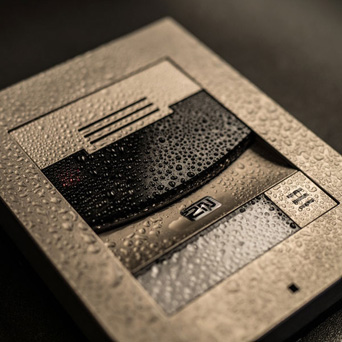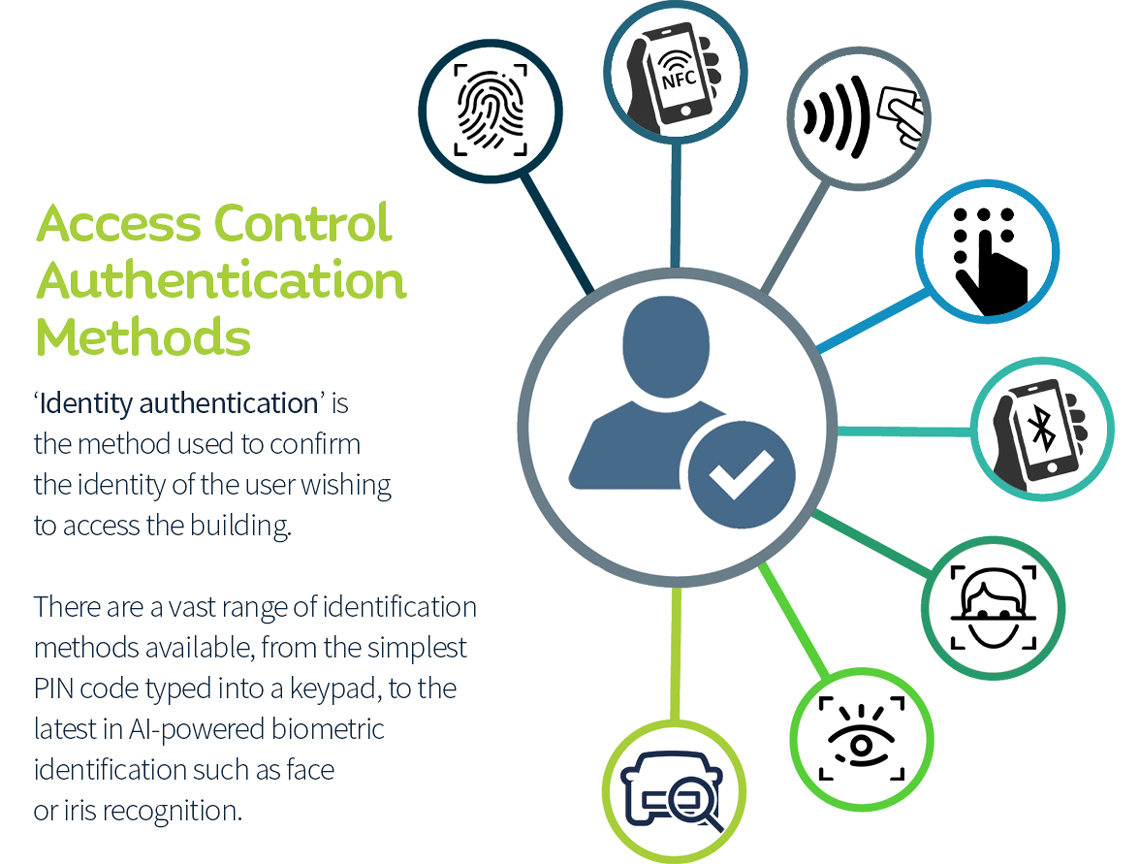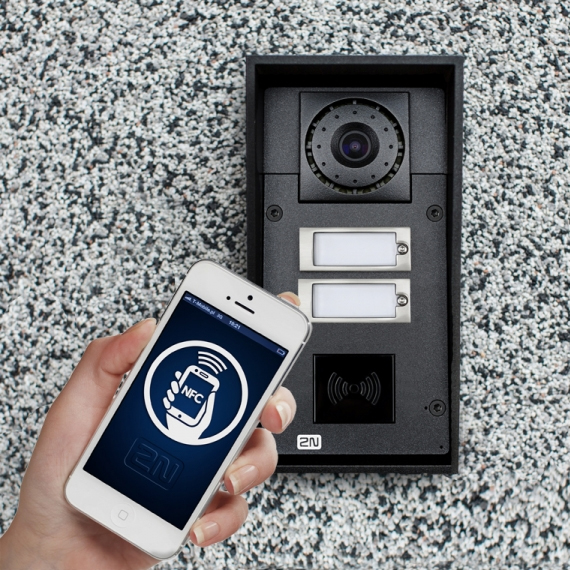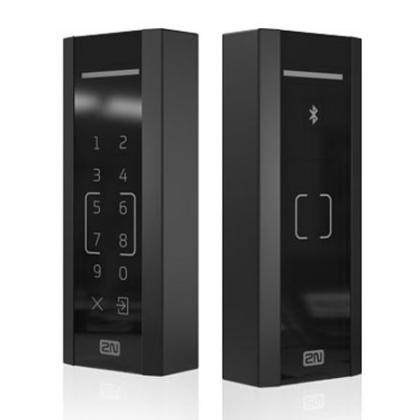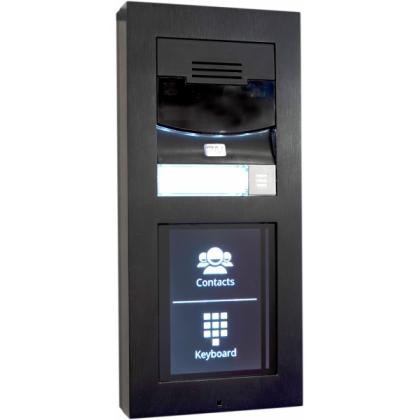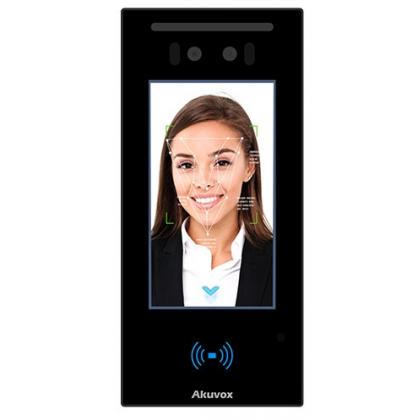Choosing the right Door Intercom
Choosing the right door intercom system depends upon a number of factors such as application, environment, number of users, security levels, connectivity and a whole lot more!..
There is a vast range of door intercom products and system options on the market to choose from, so having a detailed and considered understanding of how – and why – each individual system will be used is key to finding the right choice of products to deliver the most successful results.
What is a Door Intercom System?
A door intercom system provides communication between visitors and residents (or staff) in order to verify the visitor’s identity before remotely allowing them entry into the building. In its most basic form, a door intercom system will normally comprise of a two-way communication system using audio-only or audio & video between parties and will form part of the building’s access control infrastructure to control entry and exit through doors, gates, car park barriers, etc.
Door Intercoms are available with a huge variety of functions and specifications to meet the needs of differing applications and scale of property or campus.
Door intercoms are also frequently referred to under a variety of different names including door phones, door stations, door entry systems, video intercoms, video entry panels and more! Most recently, the growing range of smart door bells could also be considered as a simple form of door intercom – usually allowing remote communication between the visitor at the door and the resident via their smart phone.
How to choose a door intercom device
To provide the most effective door intercom system – focussed on a combination of security and usability – a number of factors need to be taken into account, particularly when choosing the ‘endpoints’ of the system; the actual door intercom stations:
- How many intercom units are required?
- Indoor or Outdoor devices?
- Audio-only or Audio & Video Intercom?
- Door Intercom or Access Proximity Reader?
- What Call function is required?
- What access authentication methods are required?
- How many users on the system?
- Flush or Surface mount?
- Wired or ‘Wireless’ devices?
- Aesthetics and Size
How many intercom units are required?
In its most simple format, a door intercom system requires a minimum of two ‘endpoint’ stations; the outdoor ‘calling’ unit at the entrance from which the visitor calls the resident and the indoor ‘answering device’ for the resident.
In a small home system, a simple one-to-one system such as this may be adequate; however, in most instances, a door intercom system will need to provide for multiple entrances and exits – as well as multiple apartments, floors, zones or offices.
Therefore, a detailed survey of all call points, access points and answering points is essential in order to understand how many devices are required and to choose the right intercom models to meet the demands of the system.
Indoor or outdoor intercom devices?
Door Intercom devices are commonly seen at main gate and main door entrances and these units will have higher protection ratings to proof against weather and adverse weather conditions.
Outdoor intercom products should have an IP rating (ingress protection rating) to signify the device’s suitability to stand-up to long-term adverse weather conditions.
Outdoor intercoms may also be available with optional ‘rain hood’ back boxes to offer even greater protection from rain (and often from direct sunlight to shade the device’s camera).
Indoor intercom devices – both intercom calling and answering devices – are much less prone to these harsh conditions and, therefore, may have either lower IP ratings or no rating at all.
However, IP rated 'waterproof' intercom devices may be specified in some indoor applications where high moisture is a consideration (such as swimming pools / leisure centres, clean room environments and cold storage warehouse facilities.)
Impact Protection Ratings (IK ratings):
In addition to devices having an IP rating, they may also have an IK rating – the device’s impact protection rating, signifying its ability to withstand higher levels of abuse in public access, harsh environment and high risk areas.
Door intercoms with a high IK rating may often be referred to as ‘vandal resistant’ products.
Indoor devices are much less likely to have an IK rating – though in some high risk areas such as prisons and secure units, for example, this ‘vandal resistance’ will still be required for both indoor and outdoor locations.
Audio-only or Audio & Video Intercom?
As a communications device (often referred to as a ‘door phone’), all door intercoms will feature audio calling, allowing the visitor and the resident to speak with one another remotely to identify the visitor before allowing access. For a simple, low-risk remote door opening system, this may be sufficient.
For better identification of visitors, however, the majority of door intercom models now also feature a camera, allowing the resident to see the visitor’s face. Cameras in most latest-generation devices will be high definition, colour cameras and, increasingly, will feature low-light technology for improved picture quality at night.
Why do some Door Intercoms have 2 cameras?
Some door intercom models may feature two cameras, though only one of them will be used for actual video transmission. A second camera is likely to be used for additional functionality such as face recognition authentication and QR code scanning for temporary key access.
Additional connected cameras
Some intercom manufacturers also allow additional ‘third-party’ CCTV cameras to be connected to the intercom system; in effect, allowing multiple camera angles to be viewed by the resident for increased security when identifying visitors to the building. For instance, in higher risk areas, the resident may wish to see if anyone is trying to gain elicit access to the building by hiding out of view of the intercom device’s standard built-in camera. In such a case, additional CCTV cameras may offer alternative views of the front door entrance and surrouinding area before the resident remotely unlocks the door.
Door Intercom or Access Control Reader?
Choosing between a door intercom device or an access control reader is a simple case of understanding whether or not communication is required between two individuals (eg. visitor and resident). If the system requirement is for the visitor to identify themselves to the resident (or security officer, for example) to allow them access, then a door intercom device is required.
However, if access can be gained without the need to communicate with someone – using authentication methods such as PIN codes, RFID cards, smart phone, etc, then an access reader (not featuring audio & video) may be the correct option.
What Call functionality is required?
Door intercom devices are available with a range of different ‘call’ functions (ie. how the visitor calls the resident). Options include:
-
Call Button(s)
Single or multiple call buttons which are associated to specific answering ‘destinations’. For example, a 4 x call button intercom might allow visitors to call ‘Reception’, ‘Main Office’, ‘Concierge’ or ‘Security Office’. This simple call functionality method is easy to use, but strictly limited in the number of ‘destinations’ due to the required number of buttons (this method would not be appropriate for a 100 apartment building, for example).
-
Keypad
Physical or digital keypads feature on many door intercom models which function for both access authentication (PIN codes) and for ‘dialling’ an apartment number to call the resident. This method allows for a greater number of ‘destinations’ on the system than the limited individual call button method.
-
Digital Phonebook
Some latest-generation door intercoms feature digital touchscreens to provide many similar functions to a smart phone. This allows for a flexible user interface and for a digital phonebook of residents, offices, etc in the building to be listed on the devices and called at the touch of a button.
Digital phonebooks are extremely flexible, supporting very high numbers of destinations, as well as allowing for digital labelling of apartments (using either apartment numbers or resident / company names). Intercom digital phonebooks will also provide easy search facilities and often have the ability to add images and logos if required.
Ideal for multi-resident buildings such as apartment blocks, student accommodation, multi-user office buildings and MDUs.
What access authentication methods are required?
Door intercom devices will normally also provide access functionality and double-up as the door or gate’s access control proximity reader.
Intercom systems are available with a wide range of ‘authentication’ methods such as RFID Card or fob, PIN code access, fingerprint readers or face recognition.
Click here for more details of access control identity authentication methods:
Due to the COVID pandemic, there has been a prodigious rise in the trend for ‘frictionless’ (also referred to as ‘contactless’) access control to minimise the number of contact points for residents and visitors entering and exiting buildings.
Frictionless authentication provides a multitude of benefits to the user, not least being the reduced risk of virus transmission from contact points. Particularly, keyless entry via smart phone or biometric face recognition can be faster, more convenient and more flexible with regards to user account management by the property or security team.
Frictionless / keyless access systems allows the management team to add – and, more importantly, remove – users from the system directly from a PC / smart phone management application without the need for distribution of physical key / identity devices.
- Multiple-factor Authentication
Higher levels of access security can be achieved using multiple-factor authentication (often also referred to as ‘dual authentication’), when a combination of two or more identity verification methods is required to allow entry. For instance, a system may require the user to scan their smart phone for Bluetooth or NFC and enter a unique PIN code into the device’s key pad.
Multiple-factor authentication should not be confused with multiple authentication methods; many door intercom and access control devices will feature a variety of verification methods to choose from, whilst only requiring the user to provide one identifier for entry (eg. either Bluetooth or NFC or PIN code).
How many users on the system?
The number of users will also be a factor in your choice of door intercom devices. And ‘users’ may be defined as the number of ‘residents’, ‘personnel’, ‘number of apartments / offices’, etc.
How does the number of users affect choice of Door Intercom?
- Licences
A door intercom system is likely to require user licences dependent upon the number of ‘endpoint’ devices on the system (ie. the number of door intercoms, answering panels, proximity readers, etc).
If resident users are accessing the intercom system remotely from their smart phones, then app licences may be required per user. Licences are likely to be chargeable per endpoint or per user and may be purchased in quantity breaks to save costs.
- Registration Management
Registering users to the system – as well as removing and amending accounts – may be managed in different ways dependent upon the number of registered user accounts at any one time and the frequency of changes. Choosing a product with a management application / software scaled to meet the needs of the quantity of user accounts on your system will have a significant effect on ongoing staff resources, costs and security.
- Number of Call Buttons or Digital Phonebook
The number of destinations / apartments / offices in the building will also affect your choice of door intercom device. For small numbers (perhaps 1~10; maximum 20), then individual call button devices will be the easiest and most cost effective option. However, for large numbers of destinations, a door intercom featuring a digital phonebook - which may have scroll or search facilities – will provide the best option for visitors to find and call the right person.
Flush or Surface mount?
Choosing between a flush or surface-mount Door Intercom device may simply be a personal aesthetic preference. However, there are a number of factors to consider when choosing between the two installation formats…
- Ease of installation
Surface-mounting a device will be the quickest and easiest installation option as the device / mounting plate will simply screw to the wall.
Flush-mounting will require cutting a recess into the wall and fitting a back box. Where the wall material is brick, block or concrete, for example, flush-mounting will have a significant impact on the time and cost of installation per device.
- Weather Protection
A flush-mounted device is likely to be better protected from rain and adverse weather conditions as the majority of the device will be protected within the wall. However, ‘IP-rated’ weather-resistant, surface-mount door intercom models are readily available and optional ‘rain hood’ units may also be available for further protection.
- Damage Protection
Similarly, flush-mounted devices are less susceptible to accidental or deliberate damage as the unit is protected on 5 of the 6 surfaces of the unit. In addition, as a flush-mount unit does not protrude from the wall, it is less likely to be accidentally knocked or caught by passers-by.
Wired or ‘Wireless’ devices?
To clarify, though some intercom models may be promoted as ‘wireless’, there is no such thing (at the time of writing!) as a fully wireless door intercom device.
However, in order to reduce the amount of cabling required (particularly for installations located at gates or barriers some distance from the main building where Ethernet cabling is unavailable), wireless data connectivity using LTE technology is available in some door intercom models. LTE ‘wireless’ intercom devices do still, however, require power – which, of course, is not available via PoE in this instance, so a mains power supply is still required.
Aesthetics and Size
As a door intercom is likely to be the ‘first point of contact’ for visitors entering your building, the design and style of the device may be a key deciding factor in your choice. Specific ‘vandal resistant’ models are more likely to have an industrial look about them, whereas some devices may be designed to provide an impressive first impression, in some cases to the extent of providing a form of ‘virtual concierge’ service to visitors.
Digital touch screens are increasingly forming the basis of the intercom user interface, which in some cases may be customisable to match the design and branding of the building or company.
In addition, size of device is also a consideration. Space may be at a premium and smaller door intercoms are frequently the preference. However, in larger buildings – particularly unmanned entrances or lobbies – larger devices will provide an overt, eye-catching ‘point of contact’ for visitors.
Find out more about Access Control and Door Intercoms:
Need help choosing the right Door Intercom?
CIE is one of the UK's leading distributors of professional access control and door intercom products from leading brands 2N and Akuvox.
Our professional system design team provide a unique system architecture service for installers and integrators to help you deliver the best in door entry and access control technology.
If you would like to discuss your next access control system or would like more information on our full range of security products, please call our team today on T. 0115 9770075 or email us now.


